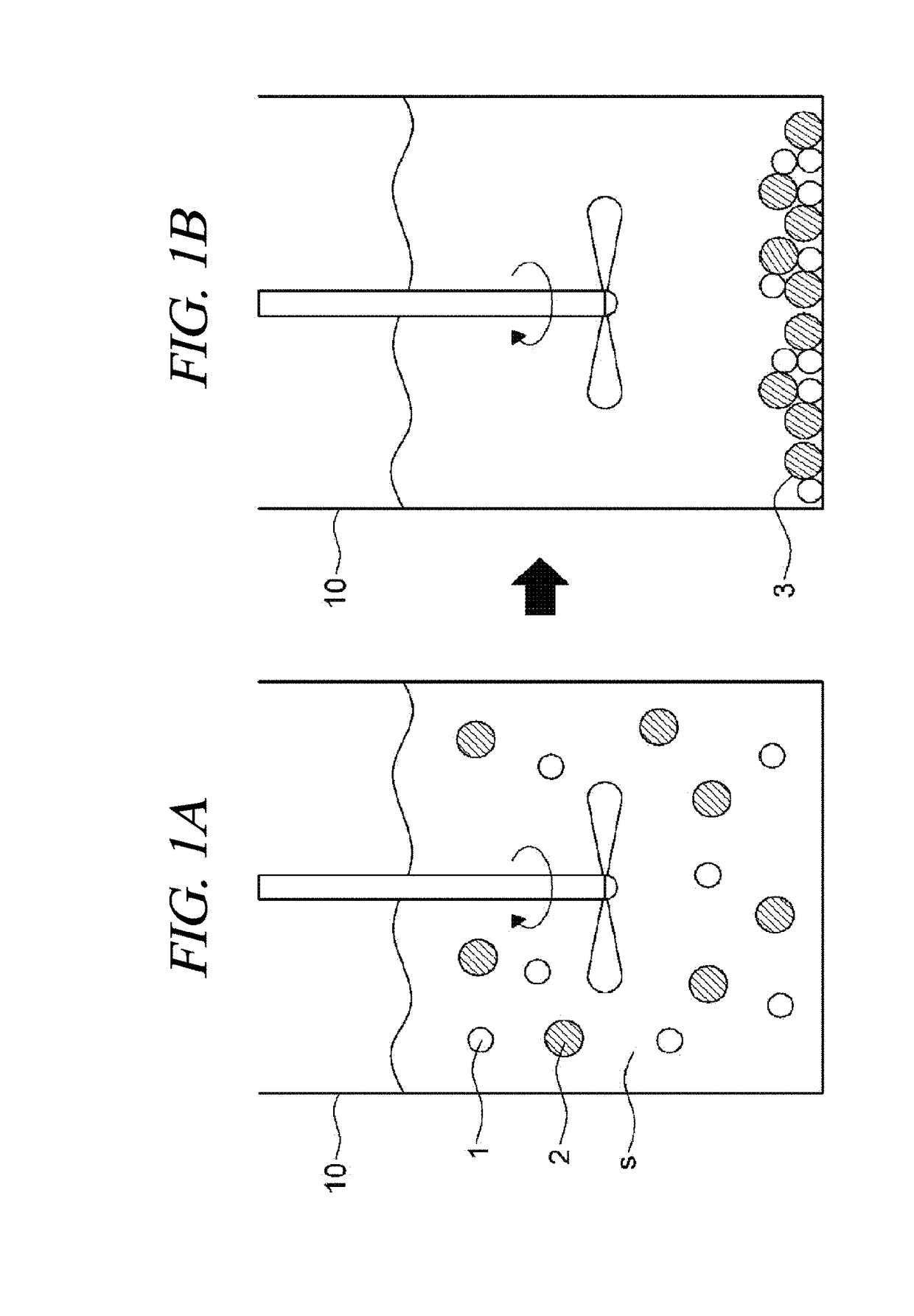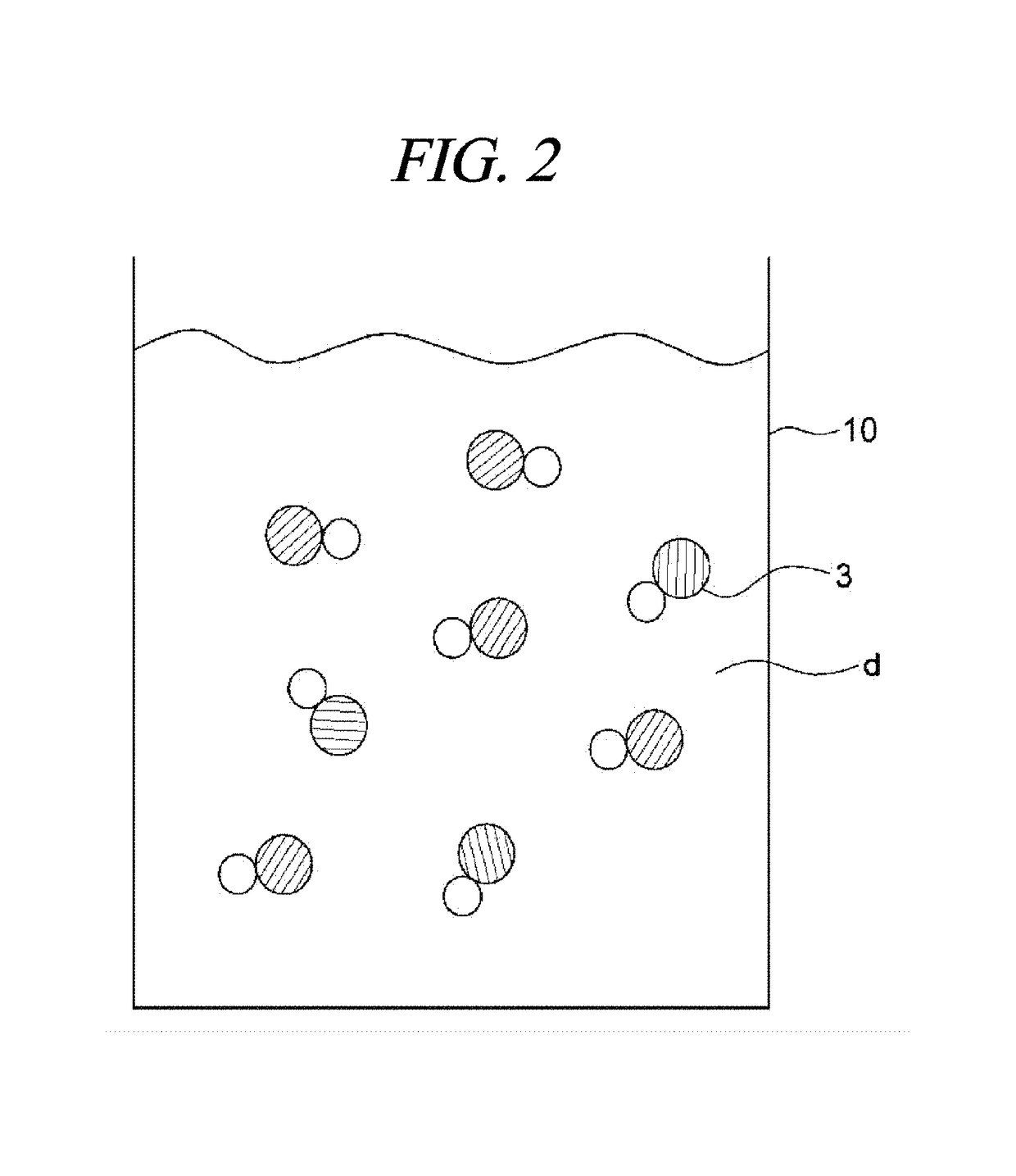Adhesion-preventing hydrogel and method of preparing the same
a technology of adhesive and hydrogel, which is applied in the field of adhesive-preventing hydrogel, can solve the problems of inability to properly apply, difficult to accurately coat, and formation of new blood vessels, and achieve excellent adhesion-preventing effect, excellent adhesiveness, and hydrophobic properties
- Summary
- Abstract
- Description
- Claims
- Application Information
AI Technical Summary
Benefits of technology
Problems solved by technology
Method used
Image
Examples
example 1
[0122]First, a mixed solution was prepared by mixing a solution of 0.5% (w / v) sodium hyaluronate having a molecular weight of 2,000,000 Daltons and a solution of 0.5% (w / v) epsilon poly-L-lysine having a molecular weight of 4,500 at a weight ratio of 1:1, and each solvent in the prepared mixed solution was distilled water. The prepared mixed solution was stirred in a container for 30 minutes to form coagulated precipitates in the mixed solution. The coagulated precipitates were collected from the mixed solution and washed three times with distilled water and then dispersed in distilled water serving as a dispersion solvent. Finally, a suspension in which the coagulated precipitates were dispersed in the dispersion solvent was heat-treated using an autoclave at 124° C. for 15 minutes to obtain an adhesion-preventing hydrogel.
example 2
[0123]An adhesion-preventing hydrogel was prepared in the same manner as in Example 1 except that a suspension dispersed in distilled water was heat-treated by double-boiling at 80° C. for 60 minutes to obtain an adhesion-preventing hydrogel.
example 3
[0124]A mixed solution was prepared by mixing a solution of 0.5% (w / v) sodium hyaluronate having a molecular weight of 1,000,000 Daltons and a solution of 0.5% (w / v) epsilon poly-L-lysine having a molecular weight of 4,500 at a weight ratio of 1:1. The prepared mixed solution was stirred in a container for 30 minutes to form coagulated precipitates in the mixed solution. The coagulated precipitates were collected from the mixed solution and washed three times with distilled water and then dispersed in distilled water. Finally, a suspension in which the coagulated precipitates were dispersed in the distilled water was heat-treated using an autoclave at 124° C. for 15 minutes to obtain an adhesion-preventing hydrogel.
PUM
| Property | Measurement | Unit |
|---|---|---|
| temperature | aaaaa | aaaaa |
| weight ratio | aaaaa | aaaaa |
| molecular weight | aaaaa | aaaaa |
Abstract
Description
Claims
Application Information
 Login to View More
Login to View More - R&D
- Intellectual Property
- Life Sciences
- Materials
- Tech Scout
- Unparalleled Data Quality
- Higher Quality Content
- 60% Fewer Hallucinations
Browse by: Latest US Patents, China's latest patents, Technical Efficacy Thesaurus, Application Domain, Technology Topic, Popular Technical Reports.
© 2025 PatSnap. All rights reserved.Legal|Privacy policy|Modern Slavery Act Transparency Statement|Sitemap|About US| Contact US: help@patsnap.com



